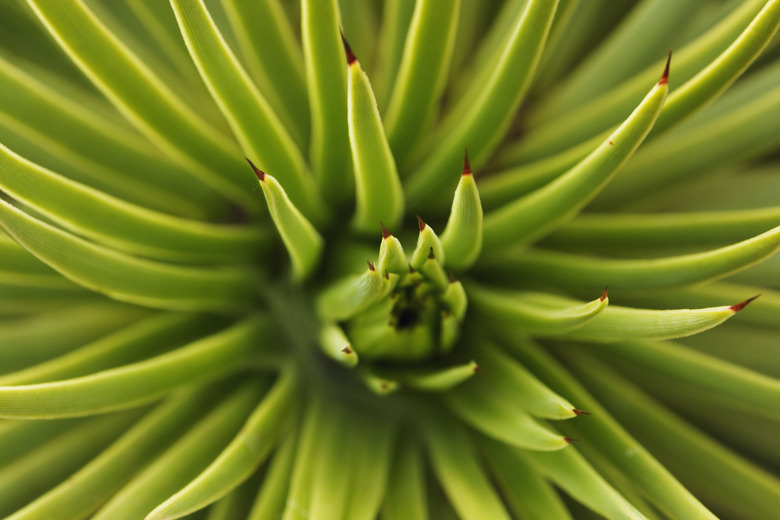Large Agave Removal
Agave (Agave spp.) is a succulent plant native to the American Southwest. While most species are hardy only in USDA hardiness zones 9 through 11, Parry's agave (Agave parryi) is winter-hardy to zone 7. As an evergreen plant in its hardiness range, agave grows new rings of leaves each year to reach a mature height of 5 to 7 feet and a mature spread of 8 to 12 feet. Taking as many as 25 years to bloom, agave dies soon after. The blooms emerge on a tall stem growing up to 30 feet tall that resembles asparagus; in fact, agave is in the asparagus family (Asparagaceae).
Removing a large agave from landscaping can be a daunting task because of the sheer weight of the mature plant.
Protection Against Agave Sap
Protection Against Agave Sap
It's best to wear protective clothing when digging up agave. Wear thick, long sleeves, leather gloves, long pants and closed-toe shoes. The sap from the agave plant contains toxic compounds and can cause blistering upon contact.
Prepping Agave for Removal
Prepping Agave for Removal
Because the sturdy bottom leaves of the agave plant lay on the ground, they can get in the way of a shovel. Removing the bottom leaves makes it easier to dig out the plant. Start by cutting off the bottom leaves with a long-handled set of shears.
Use a small hand saw to remove any of the lower leaves that are too fibrous to cut with the sheers and put in a bucket or wheelbarrow for disposal. As they contain toxic compounds, it's best not to leave the discarded leaves laying around.
Removing Large Agave
Removing Large Agave
Dig a circle all the way around the base of the plant, with the shovel tip angled toward the plant's center. The goal is to remove the whole agave and its root mass. The root mass below the plant should be shaped like an upside-down pyramid when you lift the plant from the ground. A shovel with a spade head will cut through any roots it encounters.
Make sure that the agave is fully disconnected from the ground and ready for removal. When the shovel begins to lift the root mass from the ground, replace it with a rope. Agave is heavy and can break a garden shovel.
Wrap a rope around the agave plant as near the root mass as possible. The rope should set down into the leaves, and be held in place by the leaves above and below it. The two ends of the rope will work like handles that give you leverage and a way to carry or drag the agave.
Pull the agave out of the ground with the rope. Grasp both ends of the rope and walk backward, pulling as you go, so the agave lifts out of the ground and slides across the surface of the soil.
Disposing of Agave
Disposing of Agave
Dispose of agave the way you would normally dispose of garden waste, for example, by placing it in a trash bag and throwing it out with your regular trash. Because of the agave's size, you may need to cut it apart and throw away all the pieces.
Avoid composting agave because the sharp leaf tips can present a prickly situation for gardeners and plants when spreading compost in the future. Succulents take root easily and any plant parts in the compost could grow into new plants. Also, because agave sap is toxic, it's best not to leave it anywhere it can cause damage.
Remove agave pups, or young plants, as they emerge in the soil surrounding the removal site. Baby agave can grow from any little piece of root left in the soil after the removal. Always wear gloves when removing the pups.
